When you think of iconic Banff hikes, Tunnel Mountain has to be at the top of the list.
This short and easy Banff hike doesn’t necessarily offer the same rugged untouched wilderness views as some other more remote peaks in the park, but what it does offer is a quick walk with pleasant views – all within walking distance from the town of Banff. That’s why this is the most summited peak in all of Banff, and maybe even all of the Rockies. (Banff local Anne Ness hiked up Tunnel Mountain over 8000 times.) It’s the perfect hike for families or beginner hikes, and a great way to get a taste of summitting a mountain without the challenge and effort of much higher peaks. The only other comparably easily-hikeable peak in the Alberta Rockies is Bear’s Hump.
The short hike leads up to panoramic views of the Banff townsite and the Bow Valley stretching out to the east and the west, making it a great viewpoint of many other iconic Banff peaks. Down below you might see a train pass to the north of Tunnel Mountain, though initial plans involved the train line instead running through the mountain. When the team of surveyors planning the railway in 1882 suggested that the easiest possible route for the train to take involved blasting a 275m tunnel through the modest mountain, it was met with a furious response from the CPR General Manager back east. It turned out that (to no one’s surprise) it was far easier to just direct the train around the mountain instead of through it, saving the railway a year and a half and millions of dollars. Despite the fact that the tunnel was never built, the name Tunnel Mountain remains today in order to commemorate the brave surveyors’ great historical screw-up.
Continue reading this blog post for everything you need to know to experience the Tunnel Mountain hike in Banff for yourself, including distance, elevation gain, how to get there, the best time to visit, and lots of photos of my experience.
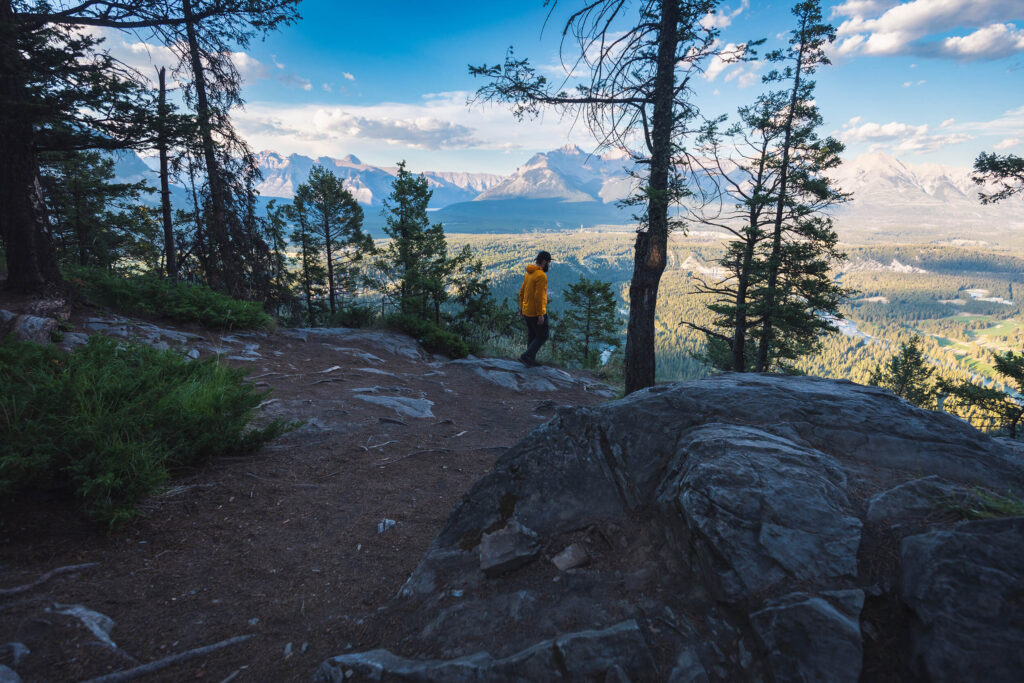
Note: The Tunnel Mountain hike is located in Banff National Park, meaning that a valid park pass is required. Day passes can be purchased at the park gates and are per day per person, but if you’re staying a week or longer, it’s more cost-effective to just buy an annual pass instead.
Before visiting Banff National Park it’s essential to read up on the Parks Canada rules that must be followed to avoid tickets and/or fines. When hiking it’s important to avoid harmful practices such as disturbing plants or rock-stacking, or removing any natural object from flowers to rocks, as it’s important to leave the environment as natural as possible for the animals and for fellow hikers to enjoy in perpetuity. As many flowers as there are, there are few enough that if we all took one, then there wouldn’t be any left. If you’re after a souvenir to take home with you, there are tons of gift shops in the Banff townsite to check out. Otherwise take only photos, leave only footprints.
If you haven’t heard of Leave No Trace principles, they’re also really essential to read up on before heading anywhere into the outdoors in general. Following these important principles basically means doing your best to leave beautiful places like Tunnel Mountain as good (if not better) than you found them, both for their preservation and for the enjoyment of other visitors.
Tunnel Mountain Round Trip Details
Distance: 3.8 KM / 2.4 MI
Elevation Gain: 214 M / 702 FT
Hiking Time: 1 HR
Hiking & Safety Tips
- Prepare for the possibility of wildlife encounters. Bear spray is a must whenever travelling in bear country, as well as learning how to use it. Though your chance of an aggressive bear encounter is low, it is always better to be prepared with bear spray. Bear bells are proven to be an ineffective bear deterrent, and are actively discouraged by Parks Canada. The best way to let bears know you’re around is simply to use your voice. Make sure to keep a respectful distance from wildlife and never feed the animals. It may seem kind but it doesn’t just kill wildlife and put people in danger, it’s also illegal.
- Research current trail conditions and make sure you are well-informed about the route before you leave, and assess if it is within your capability. Be aware of what time it gets dark and check the weather forecast. Make sure to tell someone where you’re going and when you expect to return. Every year as more and more people try hiking for the first time, the number of rescues goes up. Being prepared is the best defense.
- Pack everything you need for a successful hike, including enough water and energy-rich snacks. Remember to pack out everything you pack in though – don’t expect to find a convenient garbage can halfway up the trail. Bring appropriate layers (remember you’ll warm up once you start hiking) and sun protection. Hiking poles may be helpful but are not required. In addition to not leaving any garbage on the trail yourself, I highly recommend bringing a garbage bag and collecting any trash that you do see on the trail. You’re guaranteed to make the hike up Tunnel Mountain a more enjoyable experience for the next person.
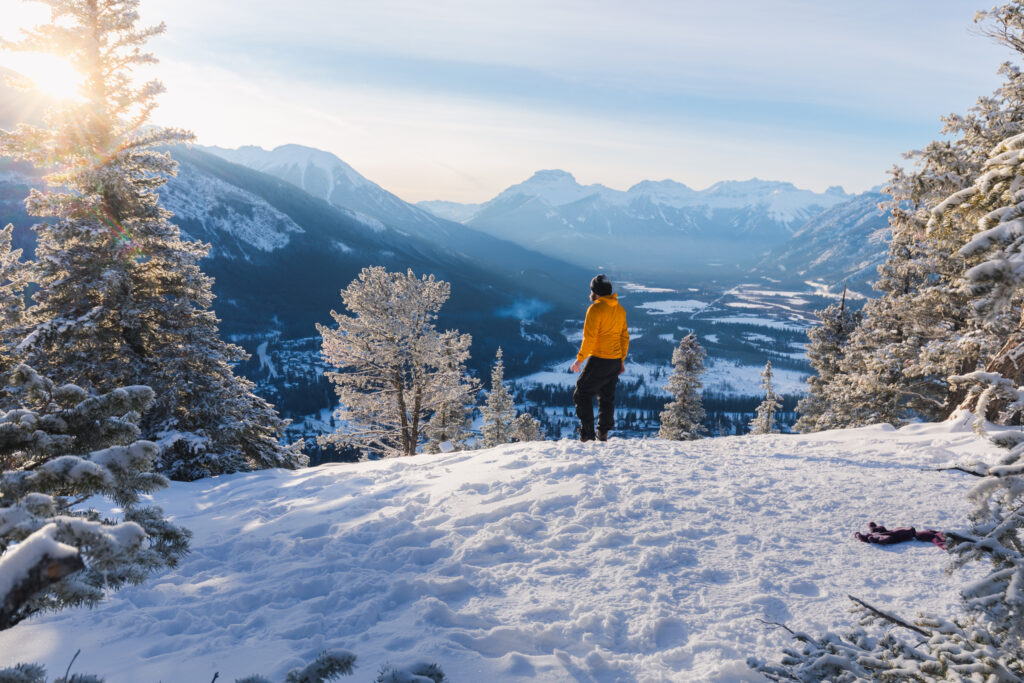
Hiking Tunnel Mountain in Winter
Many of Banff’s popular hikes are closed or rarely hiked in winter, but Tunnel Mountain is open and popular year round. The lack of avalanche and short distance makes hiking Tunnel Mountain in winter a great choice for hikers wanting to a bag a peak without first investing in specialized gear and experience. For more information on hiking Tunnel Mountain in winter click here.
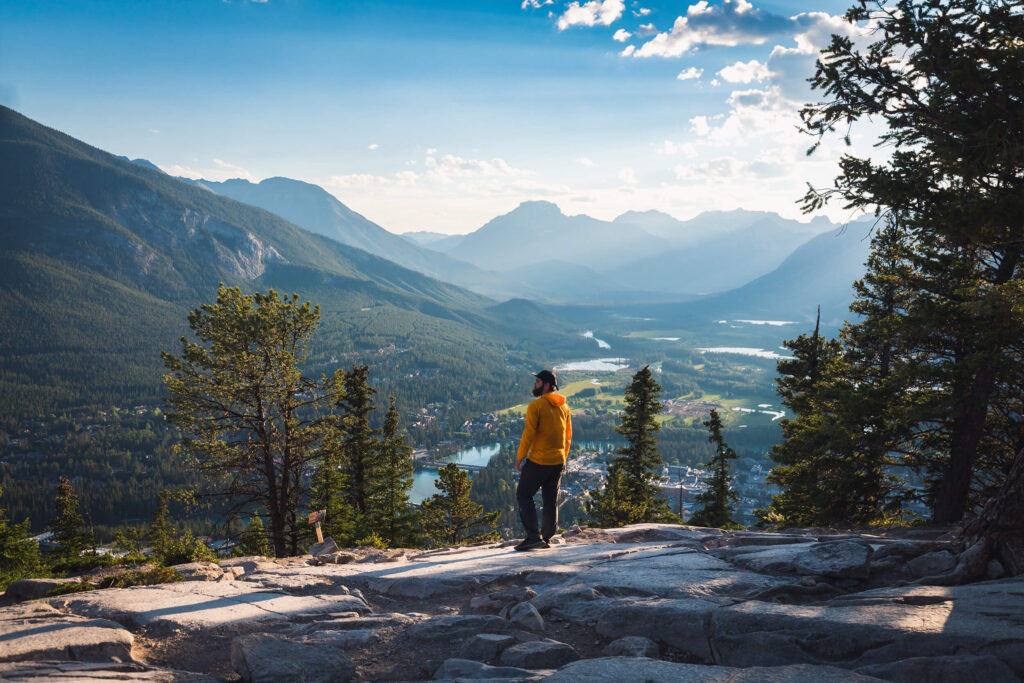
How to Get to Tunnel Mountain Trailhead
If you’re in Banff just look up at the short peak right next to town, and you’re practically there! It’s possible to drive to either an upper or lower trailhead for Tunnel Mountain. Due to the proximity of Tunnel Mountain to the Banff townsite it’s easiest to start your walk from wherever you’re staying without needing to drive up to either of the Tunnel Mountain parking lots. It doesn’t take longer than ten or twenty minutes to get the the trailhead from anywhere in town. If you’re driving, there is an upper and lower Tunnel Mountain parking lot, though the upper lot closes in winter. Starting at the upper parking saves about half a kilometre of walking and 50 m of elevation gain from the hike’s total. The hike recorded on this blog depicts starting the Tunnel Mountain hike from the upper parking lot, as the lower was closed in summer of 2022.
Click here to open the exact trailhead location in Google Maps.
Hiking Tunnel Mountain

Starting the hike up Tunnel Mountain from the Upper Parking Lot.
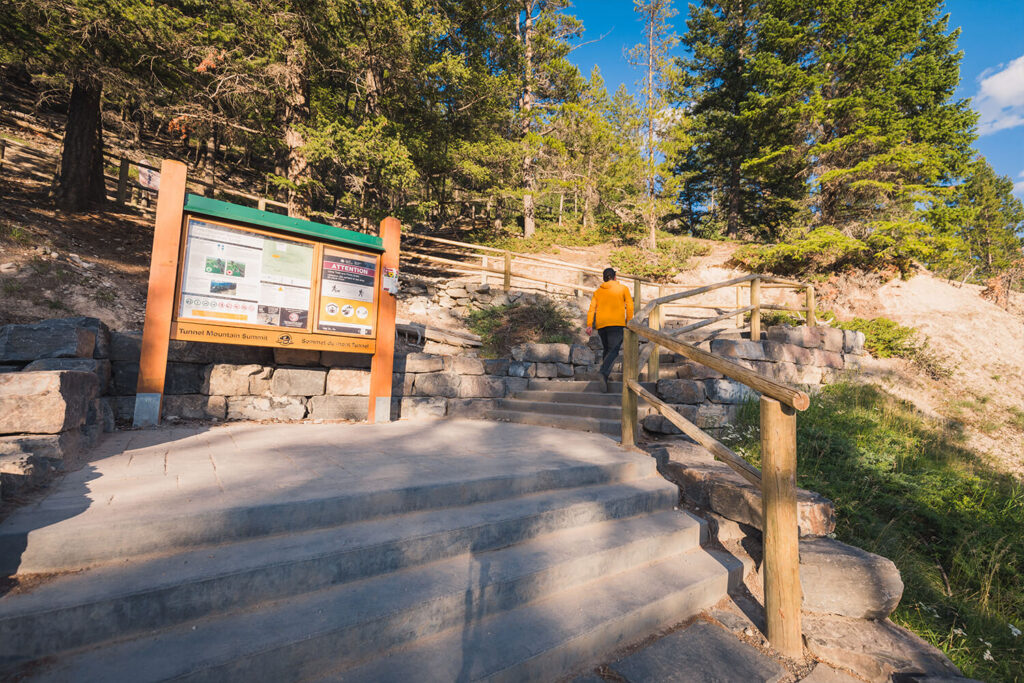
Tunnel Mountain upper trailhead.

Heading up.

A few short switchbacks as the trail makes its way up and along the length of the short mountain.
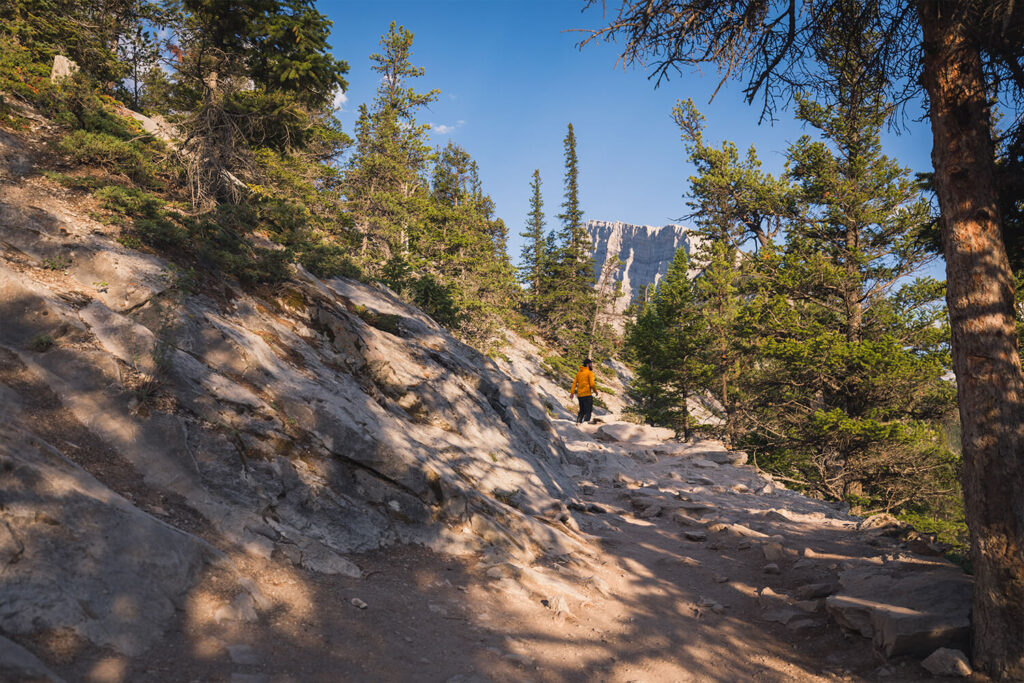
Nearing the top of the ridge the trail becomes a little more rocky. Mt. Rundle making an appearance in the background.

Views open up over the Bow Valley. It feels cooler here now that the trail is open to the breeze.
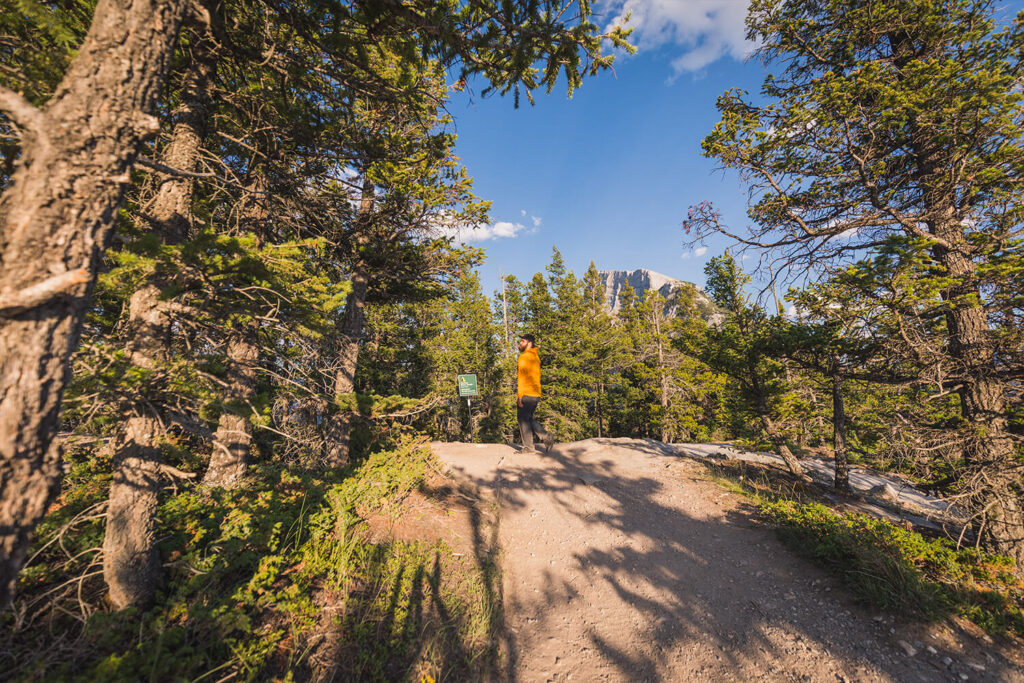
Turning left to head up the side of the mountain. A sign warns of the danger and damaging effects of off-trail travel.
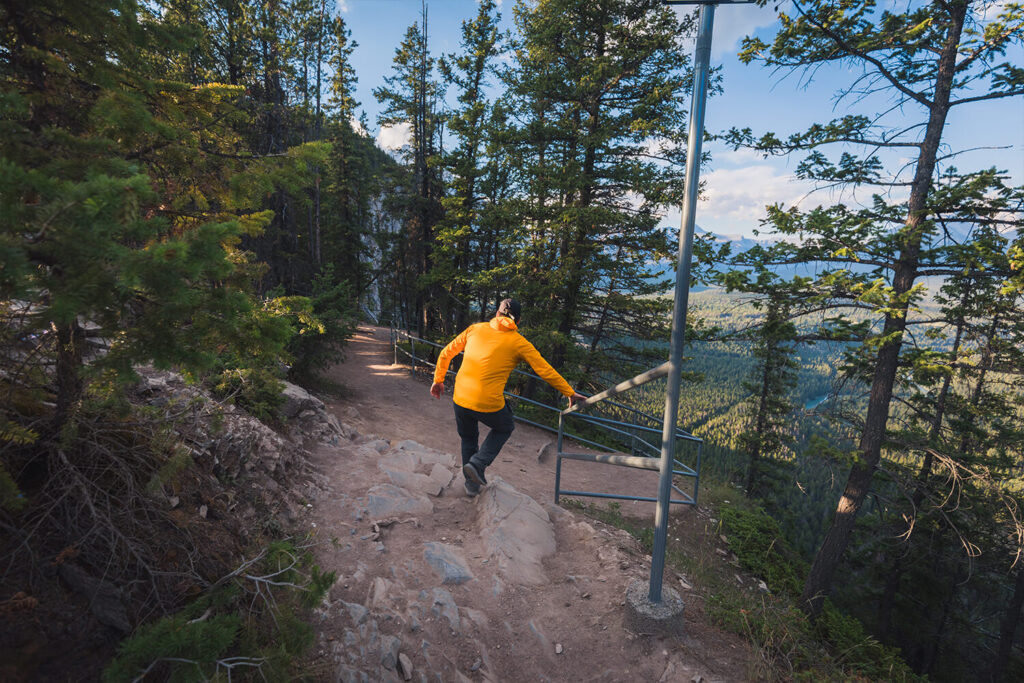
The first of a couple viewpoints to the East.
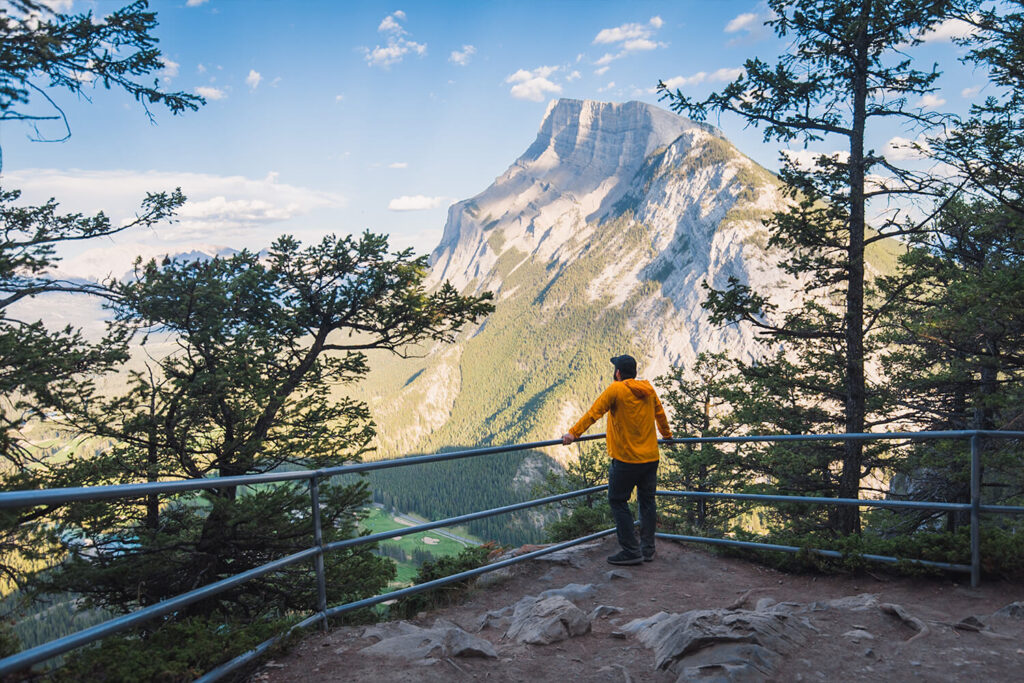
Mt. Rundle looking magnificent. The golf course sits at its feet and is the one blemish on a largely natural view.
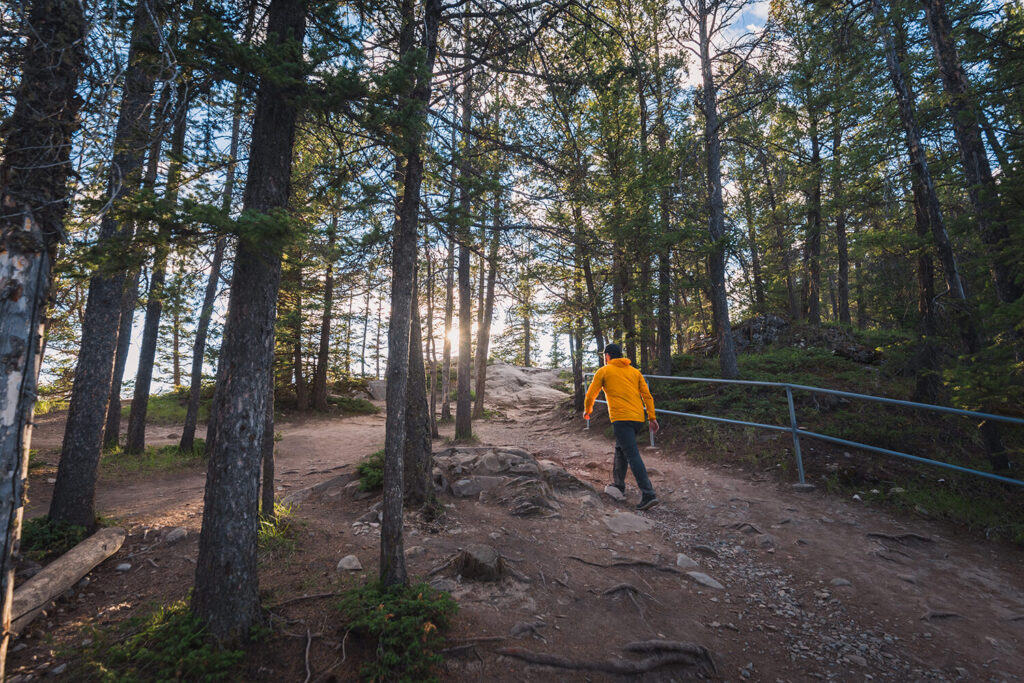
The trail here has become super braided and wide thanks to off-trail travel.
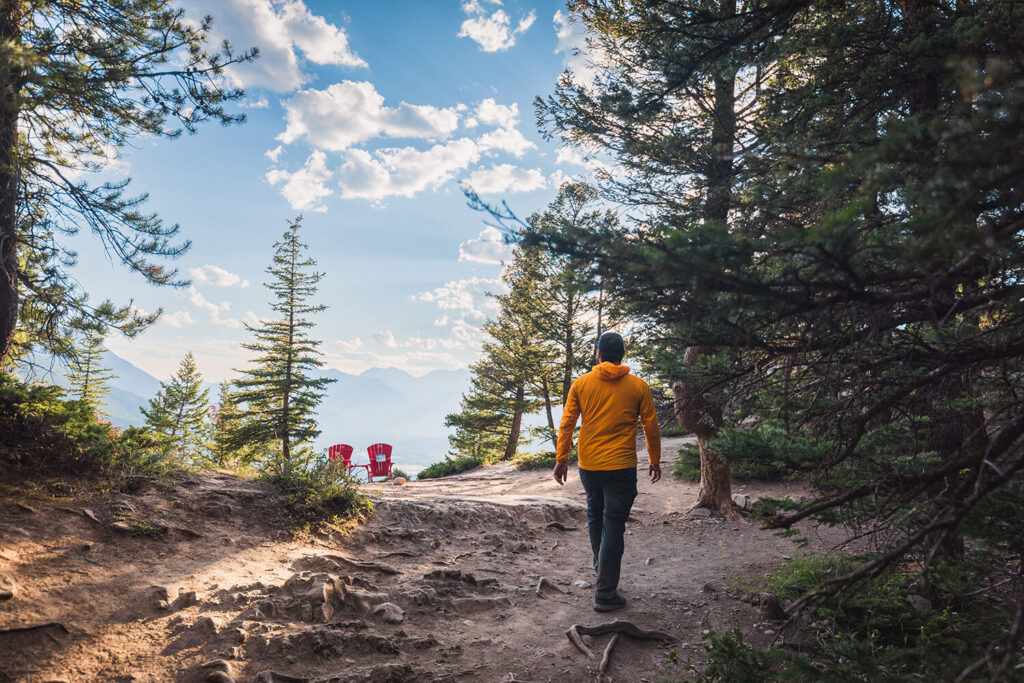
The iconic Parks Canada chairs make a decent viewpoint just shy of the summit.
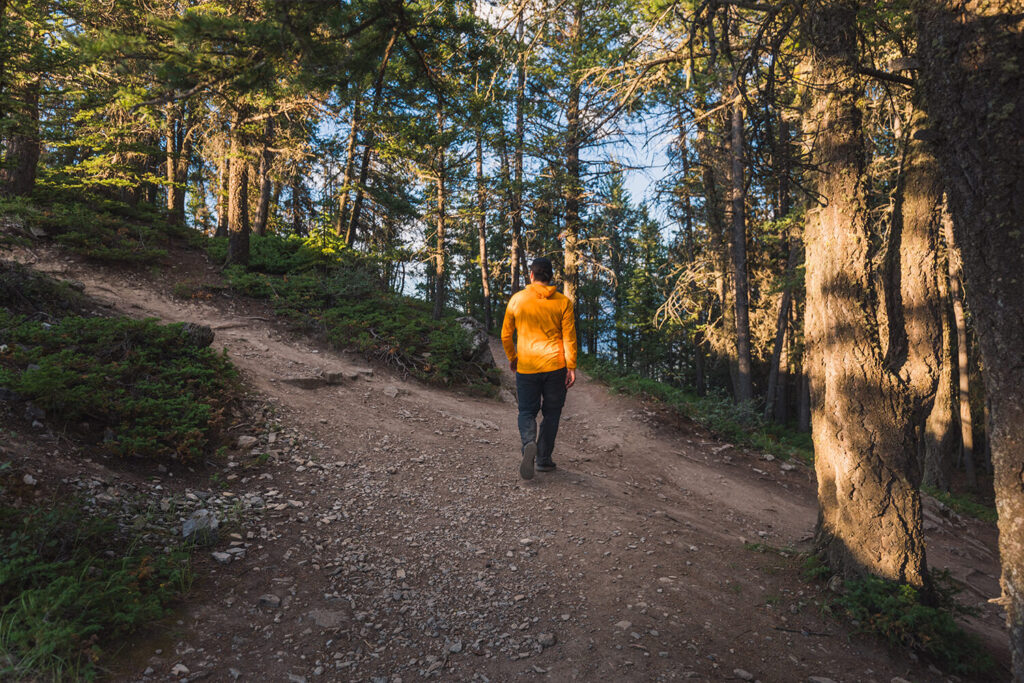
Again, ignoring social trails that have developed due to off-trail travel and doing my best to stay on the main trail.

The summit of Tunnel Mountain.

Just near the summit is a large rocky area making for the perfect viewpoint to the west. The mountain at left is Sulphur Mountain, home to another iconic Banff hike up to Sanson Peak, and the tiny bump at its base is Windy Knoll.
Recommended Hiking Gear



Water is a must whenever I’m hiking, especially if the sun is going to be out. My favourite water filter I’ve used is the Katadyn BeFree 0.6L, which unlike other water filters I’ve used packs up really small and lightweight. For hikes where I know there won’t be any readily available water sources along the way, I make sure to bring my own. The Hydrapak Stow 1L bottle is my go-to, for the same reason that it’s made of a soft plastic that folds up and doesn’t take up any more extra space than necessary in my pack. Finally, Aquatabs are another great option for purifying water, with one tablet being suitable for one litre of water. I previously used the Grayl water filter while travelling internationally, and though I found its hard body more convenient for day to day use and easier to drink from, it has a little too much bulk for my fast-and-light style of hiking.



The secret to all my photos of gorgeous sunset and sunrise mountaintop views? A lot of hiking in the dark. And let me speak from personal experience when I say that the last thing that you want to happen when hiking is to be caught in the dark without a headlamp. I used the Black Diamond Spot 400 for years and it worked great – until I lost it on top of a mountain somewhere. The only downside to it was having to worry about the batteries dying, though there’s also a slightly more expensive version that has a rechargeable battery. Nowadays I’m using the Petzl Actik Core, which is a bit pricier than the more budget-friendly Black Diamond, but is also brighter, more comfortable (in my opinion), and has a hybrid power system that is rechargeable but can also take AAA batteries if needed.
You won’t see me using trekking poles on shorter hikes often – but on long hikes and backpacking trips, as well as certain scrambles, they are an absolute lifesaver. I’ve invested in a high quality ultra-lightweight pair of MSR DynaLock Ascent carbon poles which, while pricey, I don’t regret one bit. If you’re not entirely sure how much use you’re going to get out of a pair of trekking poles, the best budget-friendly option would be the Trekology Trek Z 2.0. Amazon does sell a lot of cheaper Made in China-style trekking poles for cheaper, but these usually are much much heavier and not worth buying.
All the best and most long-lasting cables and power banks I’ve ever owned have been Anker. I once had a phone cable from them that lasted me over three years of daily use! That’s why I keep an Anker PowerCore Essential 20K power bank on me. Like many people I use my phone for a lot of stuff when hiking (checking in with family, using online maps, taking photos, flying my drone) so I like to be prepared for that low battery warning by having a backup power source on me just in case.



The only socks I ever buy for myself are from Darn Tough, and I almost always make sure to wear them when hiking. After years of having no problems only wearing these comfortable and rugged socks for hikes, I accidentally wore a pair of no-name socks on a hike last year and ended up with blisters on both feet. Safe to say I’m back to sticking with the Darn Tough. And the best part? They have a lifetime guarantee, meaning that if they ever wear out you can send them back for a brand new pair. For hiking footwear I go between a pair of lightweight approach shoes for quick and dirty mountain ascents or anything involving scrambling and more heavy-duty boots for longer treks. I’ve worn a couple different versions of the lightweight but super durable Arc’teryx Konseal FL 2 approach shoes for a few years now and am very impressed with the durability. I also really like the thick toecap that keeps me protected every time I stumble into a root or large rock. For longer, tougher, or muddier treks I rely on my LOWA Camino EVO GTX, which I find insanely comfortable and made of very high quality.



I wear my Ar’teryx Gamma Lightweight Pants on every single hike I go on, and on many days when I’m not hiking. After several years of abuse they are still holding together extraordinarily well, with only a few small holes from where I’ve fallen down and some slight stains from being repeatedly coated with mud. They’re lightweight, breathable, and super comfortable. For lightweight and breathable hiking tops I’m a big fan of both the Patagonia Capilene Shirt and the MEC Core Shirt. My Arc’teryx Squamish Hoody shows up in a lot of my photos. It’s super lightweight and packable, and does a great job of cutting the wind while also being pretty breathable. I also have an Arc’teryx Atom Hoody and Arc’teryx Beta LT that I pull out for cooler or wetter conditions.
I hope you enjoyed this guide to hiking Tunnel Mountain in Banff National Park! Feel free to leave any questions in the comment section below or to contact me directly via social media.
